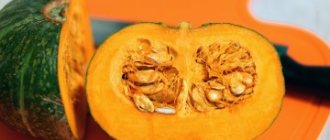The baby will grow quickly and develop well with a balanced diet. In the first year after birth, the basis of nutrition is mother's milk. Its composition depends on the nutrition of the nursing woman. An important part of the menu is porridge, especially pearl barley.
The benefits of pearl barley
Pearl barley contains a complex of vitamins, fiber, amino acids and microelements. Due to this, the body is influenced by:
- anti-inflammatory;
- antispasmodic;
- enveloping;
- diuretic;
- antibacterial
- antifungal.
Barley porridge helps normalize the functioning of the digestive system and get rid of obesity. The beneficial elements of pearl barley restore elasticity to the skin, which is very important after pregnancy.
Porridge has great nutritional value, but low calorie content, which is a big “plus” when consuming it. Barley has a beneficial effect on milk production, increasing lactation. The fat content and nutritional value of mother's milk increases. You can prolong lactation by including barley porridge in your diet.
Pearl barley, thanks to its unique composition, has a positive effect on many internal organs and systems. It removes toxins, normalizes the functioning of the nervous system and heart, prevents the deposition of cholesterol, and improves the elasticity of the walls of blood vessels.
For people with digestive problems, experts recommend regularly including boiled cereals in their menu. This helps with stomach and duodenal ulcers, pancreatitis, and colitis. You can't get better from this kind of porridge, but it gives you energy. This is useful for those who are on a diet. A nursing mother especially needs strength and energy to care for her baby.
Barley for a nursing mother
Having understood the composition of pearl barley and its properties, we will now answer the question of whether it can be consumed while breastfeeding.
Eating barley brings the following benefits during lactation:
- increases the fat content and nutritional value of breast milk;
- enhances and prolongs lactation;
- actively restores the female body after childbirth;
- gives a nursing woman strength and energy;
- helps restore skin elasticity, including on the stomach;
- prevents the mother from gaining excess weight, which is often observed during breastfeeding.
However, doctors also give caution regarding the use of pearl barley during lactation:
- it should be introduced into the diet of a nursing mother only after the newborn is 1 month old, or better yet 2 months, since pearl barley “heaviens” the formula of breast milk, which leads to colic, bloating in the baby, and frequent regurgitation;
- a nursing woman should eat 2 small servings of pearl barley per week.
If you follow these 2 simple rules, then pearl barley in your diet will bring many benefits to both the nursing mother and her baby. By the way, this cereal almost never causes allergies in the baby.
And therapists, obstetricians-gynecologists, and pediatricians unanimously declare: “Barley can and should be eaten by a nursing mother!”
Harm of pearl barley porridge
Porridge is considered a heavy dish and is not recommended for children under 3 years of age. There is no need to consume it in large portions, especially at night. This will cause indigestion. It is better to eat this dish warm. Lovers of cold porridge should take into account that this makes it more difficult for the stomach to digest it.
Cereals contain gluten, which in large doses can stimulate calcium leaching. This leads to rickets in children and thinning of bone and cartilage tissue in adulthood.
Can a nursing mother eat this porridge?
Doctors and breastfeeding specialists do not prevent the introduction of pearl barley into the diet of a nursing mother, as it is a storehouse of vitamins.
From what month?
Is it possible to have pearl barley porridge at 1 month or until a child is 2 months old with breastfeeding? Most doctors agree that pearl barley, which enters the baby’s body through mother’s milk, will be quite difficult for a baby to digest at the age of 1-2 months.
The fact is that cereal contains substances that are difficult for the baby’s unformed gastrointestinal tract to process. Therefore, it is better to postpone the inclusion of pearl barley in the diet of a nursing mother until the child is 3-4 or 5-6 months old.
In what form should I use it?
Attention! A nursing mother can eat pearl barley in the form of porridges or soups. You need to introduce it into your menu gradually, preferably in a mushy form. Moreover, it should be boiled in water without adding milk, butter, or large amounts of sugar.
It is better to eat pearl barley hot , since it is in this form that it retains most of its beneficial substances.
After it turns out that the baby is not allergic to pearl barley, you can introduce soup with it into the diet of the nursing mother. The most famous barley soup is rassolnik, but it is better to avoid it during lactation, as it contains pickled cucumber.
At the same time, you can add soup with pearl barley and fresh vegetables (potatoes, carrots, onions) to the menu if a breastfed child does not have an allergic reaction to them.
How is it useful?
Pearl barley is the name given to peeled and polished barley grains. Barley has earned an honorable place among people who try to eat healthy.
This cereal is characterized by the following beneficial properties :
- A large number of amino acids in the composition, including lysine.
- Vitamins A, B, D, E, PP are necessary to ensure the normal functioning of the body.
- High protein value.
- Many useful microelements, for example:
- zinc;
- iodine;
- phosphorus;
- potassium;
- calcium;
- iron.
- Cereals are the strongest antioxidant.
- Has anti-inflammatory, diuretic properties.
- Contains antibacterial components.
- Increases lactation.
- Helps normalize metabolism.
Important! Despite all of the above beneficial properties of cereal, it is still not worth eating it in enormous quantities during lactation.
How to properly introduce it into the diet?
When introducing pearl barley porridge into the menu of a nursing mother, it is boiled in water without adding oil. Eat only 3 spoons after the main breakfast. Eating a new product in the morning will allow you to observe the baby’s reaction to the introduction of a new dish all day long. If the baby has a tummy ache and intestinal gases begin to accumulate, then the introduction of the product will have to be postponed for another month.
Barley has a positive effect on lactation, lengthens the time of milk production, and improves the quality of the composition. But this is not porridge, but a decoction. To make it, you need to fill a glass of cereal with water (250 ml). Simmer on low heat for 3 hours. Drink the cooled decoction, 50 ml, three times a day.
From cereals you can prepare not only porridge, but also viscous soups. The popular barley soup, rassolnik, is not recommended during breastfeeding. It contains a lot of vegetables that are not consumed during lactation.
How to properly introduce pearl barley into your diet?
When breastfeeding, pearl barley porridge can be recommended to the mother for consumption only after the baby is one month old. Until this time, the baby’s gastrointestinal tract does not produce the necessary enzymes to cope with such a product in the diet of a nursing mother.
In approximately 40% of babies, pearl barley causes bloating and colic. If a baby regularly experiences digestive problems in the first months of life, a nursing mother should not rush to introduce pearl barley into her menu. The first attempts can be made after stabilizing the child’s gastrointestinal tract and closely monitoring the reaction of his body.
To prevent the baby from experiencing discomfort when the mother eats pearl barley dishes, it is recommended:
- At first, cook pearl barley porridge in water, without vegetable and animal fats;
- at the first meal, eat no more than three tablespoons of porridge, not on an empty stomach, in the first half of the day;
- increase the portion gradually to 100 grams at a time, if the baby does not have digestive disorders or increased gas formation;
- You can eat up to 200 grams of porridge per week (with increasing portions and frequency of consumption, the likelihood of gastrointestinal disturbances in an infant increases).
How to properly prepare pearl barley?
Porridge
The disadvantage of cereal is its long cooking time. A mother with a small child does not always have enough time to cook. To speed up the cooking process, the cereal is soaked for 3 hours in hot water. Some housewives soak it in cold water, but for 12 hours, then cook it in slightly warmed milk. As soon as the porridge boils, place it in a water bath and simmer until done for about 6 hours. You can add butter to the finished dish. This cooking process is labor-intensive and time-consuming. But all useful substances and valuable properties are preserved.
You can buy instant porridge, but it is a semi-finished product, processed many times, with little usefulness left in it.
Soup
During lactation it is useful to eat soups. They saturate the body with useful elements and replenish fluid losses. Soup with pearl barley will be light. It will require a small set of products. Before cooking, the cereal should be soaked overnight in cold water.
Chicken broth soup recipe
Add chopped onions and carrots to the finished boiling broth. Then the cereal is poured out (the water is drained first). Cook for 10 minutes. Then add peeled, chopped potatoes. Add salt to taste. Leave for 30 minutes on medium heat. Delicious soup is ready.
Second courses
Pearl barley goes well with meat. To do this, it is better to choose lean pieces of pork, veal, chicken, and rabbit. Processing methods should be gentle - stewing, baking in the oven. It should be remembered that the amount of spices must be controlled when breastfeeding.
Pearl barley makes a tasty and nutritious pilaf. The whole family will love it. To prepare, you will need to take half a kilo of fresh pork with a minimum of fat, a head of onion, carrots, a stick of butter, 500 grams of pearl barley.
Cut the pork, cook it, fry it with onions and carrots. Add some tomato paste with a little spice. Mix everything and let it soak. Soak the cereal for 3 hours. Pour boiling water – 2/3 liter, cook for 15 minutes. Next, put the cereal into the broth, add pork and vegetables, and put on fire. Wait until the liquid evaporates to the level of the cereal. Then close the pan with a lid and place in the oven for 50 minutes. Delicious pilaf is ready.
The child will grow well with adequate nutrition that his mother can provide him. To do this, she herself must eat a balanced diet.
Barley during breastfeeding: pros and cons
We found out above that pearl barley is a valuable nutritional element; now let’s try to figure out whether a nursing mother should include it in her menu?
After pregnancy, a woman wants to return to her previous shape as quickly as possible, say goodbye to extra pounds, but do all this without threatening the baby’s health. Pearl barley and dishes made from it will help cope with this problem, as well as restore the skin’s former elasticity.
Pediatricians recommend that women during lactation include pearl barley in their diet, as this cereal perfectly stimulates the production of breast milk and saturates it with vitamins and microelements.
Mommy’s body needs to be replenished with a vitamin and mineral complex, and pearl barley will cope with this task perfectly.
Is it possible for a nursing mother to eat pearl barley? The answer to this question is naturally positive. Or rather, you even need to add this pearl porridge to your diet.
The main thing is to observe the child’s reaction to an unfamiliar product when first used, do not combine barley with fatty and spicy additives, and maintain moderation and variety in food.
Recipes for nursing mothers
First you need to learn how to cook cereal correctly:
- Rinse the pearl barley before cooking.
- Soak the cereal overnight in cold, unboiled water. If the pearl barley has not been soaked in advance, before cooking it should be poured with boiling water and left for at least 30–40 minutes.
- Maintain the proportions of pearl barley and water when soaking - 1:3.
- Cook the porridge for 40–50 minutes, during which it needs to be stirred periodically.
- Infuse the dish for about 20 minutes.
Video: how to cook pearl barley correctly
When and how to introduce pearl barley into the diet while breastfeeding
If a mother is breastfeeding, it is recommended to start consuming pearl barley after the baby is one month old. You shouldn't start doing this earlier. The baby's gastrointestinal tract may not be able to cope with the digestion of the product, since it does not yet produce all the necessary enzymes. General recommendations for introducing pearl barley porridge into the menu of a nursing mother:
- Eat no more than 2–3 spoons of the dish the first time you eat it after giving birth.
- You need to cook porridge in water.
- Increase the portion by a few spoons if the baby does not have a negative reaction. You should not eat the dish more than twice a week.
- Do not eat the product in the afternoon. Pearl barley porridge is a difficult dish to digest. It can take a long time to process it.
What is included in pearl barley porridge, what is its calorie content?
Pearl barley porridge is obtained by boiling cereals made from barley. This dish contains many vitamins, macro- and microelements. It should be taken into account that with an increase in portions, a nursing woman may receive an excess amount of nutrients.
Table: product composition and daily intake of nutrients for a woman during lactation
| Vitamins, macro- and microelements | Contents per 100 g of product | Daily value for a nursing mother |
| A | 0.014 mg | 0.4–1.2 mg |
| B1 | 0.11 mg | 1.8 mg |
| B2 | 0.07 mg | 2.2 mg |
| B4 | 37.7 mg | 25 mg |
| B6 | 0.37 mg | 2.2 mg |
| B9 | 0.024 mg | 4 mg |
| E | 1.2 mg | 15 mg |
| Zinc | 0.8 mg | 10 mg |
| Iron | 1.7 mg | 2.5 mg |
| Copper | 0.2 mg | 1.4 mg |
| Calcium | 37 mg | 1400 mg |
| Magnesium | 40 mg | 450 mg |
| Potassium | 171 mg | 200 mg |
| Phosphorus | 321 mg | 1100 mg |
The calorie content of a dish depends on what it is prepared with. If you cook porridge in water, it will contain 106 kcal per 100 g. And if you replace water with milk, then the calorie content of the dish will depend on the fat content of this product. The number of calories increases with the addition of butter, vegetables, meat and other ingredients. Pearl barley porridge is lower in calories than dishes prepared from other cereals. The product is low in fat.
Table: comparison of pearl barley with other cereals in terms of nutritional value
| Groats | Squirrels | Fats | Carbohydrates | Kcal |
| Pearl barley | 9.3 g | 1.1 g | 66.9 g | 320 |
| Wheat | 12 g | 2.9 g | 73.7 g | 334 |
| Buckwheat | 12.6 g | 2.6 g | 68 g | 329 |
| Manna | 11.3 g | 0.7 g | 73 g | 326 |
| Oatmeal | 11.9 g | 5.8 g | 65.4 g | 345 |
| Rice | 7 g | 0.6 g | 73.7 g | 323 |
| Corn | 8.3 g | 1.2 g | 75 g | 325 |
Barley porridge is a source of fiber, which cleanses the intestines of toxins and waste.
Table: fiber content compared to other cereals
| Groats | Fiber content per 100 g of product |
| Pearl barley | 2.6 g |
| Wheat | 0.7 g |
| Buckwheat | 1.1 g |
| Manna | 0.2 g |
| Oatmeal | 2.1 g |
| Rice | 0.4 g |
| Corn | 1.8 g |
Recommendations for use during breastfeeding
During breastfeeding, each new dish should be introduced into the diet with extreme caution and the baby’s reaction to the product should be carefully monitored.
How to properly introduce it into the diet?
Nursing mothers introduce barley dishes into their diet according to the following scheme:
- The first portion of the dish should be eaten in the first half of the day in the amount of one tablespoon. The absence or presence of allergic reactions, for example, in the form of a rash, will help you understand whether a new product is suitable for your baby.
- If the child does not have an allergic reaction, there are no stomach problems, or stool disorders, then the nursing mother can gradually increase the portion of porridge to one hundred grams per day.
Daily and weekly norm
Breastfeeding specialists and pediatricians do not recommend that a nursing mother eat more than 200 g of pearl barley porridge at a time .
Reference! It is also worth noting that the volume of pearl barley per week during lactation should also not exceed 200 g.











